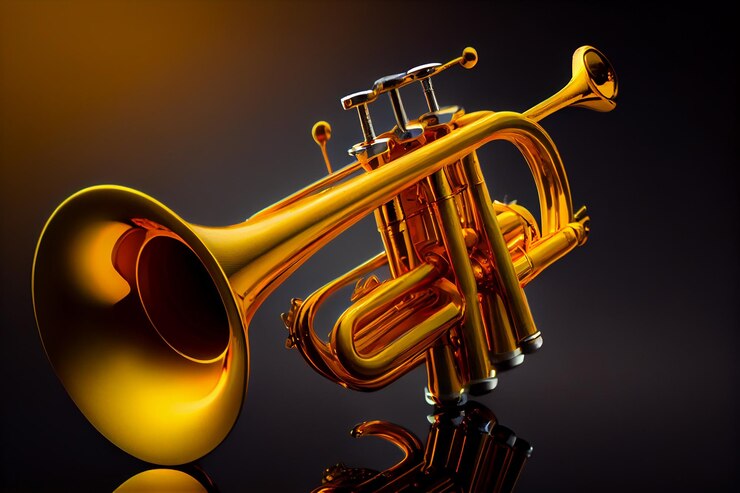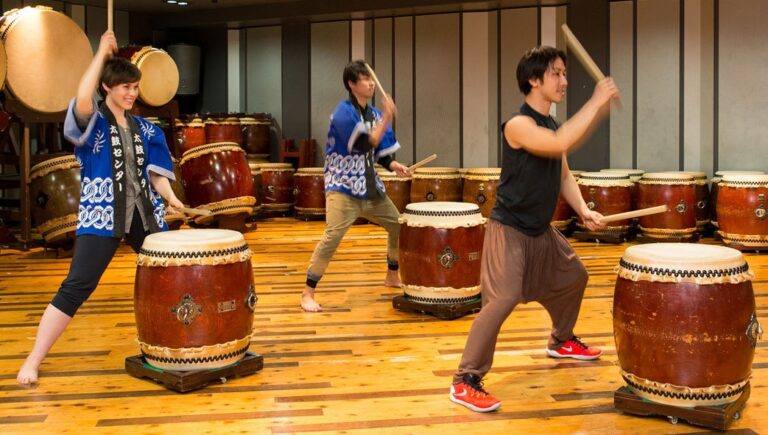Flugelhorn: A Complete Guide to This Unique Brass Instrument
The flugelhorn is one of the most captivating brass instruments, with a sound that is both warm and velvety, yet full of power and expression. Often compared to the trumpet and cornet, the flugelhorn holds a unique place in both jazz and classical music. In this article, we will explore the history, characteristics, uses, and differences of the flugelhorn, diving deep into what makes this instrument stand out. Whether you’re a musician, a music lover, or simply curious, this guide will provide you with all the essential knowledge you need about the flugelhor’n.
What is a Flugelhorn?
The flugelhorn is a brass instrument that belongs to the same family as the trumpet, cornet, and French horn. It is characterized by its wide, conical bore and mellow tone, setting it apart from the brighter sound of the trumpet. It shares many similarities with its brass counterparts but has a distinct timbre that is warmer, rounder, and less piercing, making it ideal for certain styles of music.
The word “flugelhor’n” comes from the German word “Flügel,” meaning wing, referring to the instrument’s early role in signaling during military operations. Initially, it was used to direct troops or signal during hunts, but over time it evolved into a musical instrument used in orchestras, jazz ensembles, and brass bands.
History of the Flugelhorn
The flugelhorn has a long and varied history, with its roots dating back to the 18th century. It is believed to have evolved from the hunting horns used by military personnel to communicate across long distances. These early horns were simple in design, often made from natural materials like animal horns or wood.
By the 19th century, the flugelhorn began to take on a more recognizable form, with valves added to increase its range and versatility. It was around this time that it started to be used more in musical settings, both in military bands and, later, in orchestras and jazz groups. One of the key figures in the development of the flugelhorn was Adolphe Sax, the Belgian instrument maker who also invented the saxophone. Sax made several improvements to the design of the flugelhorn, helping to shape it into the instrument we know today.
Characteristics of the Flugelhorn
Several features make the flugelhor’n unique compared to other brass instruments. Understanding these characteristics can help both musicians and listeners appreciate the qualities that set it apart.
- Bore Shape: One of the primary differences between the flugelhorn and instruments like the trumpet is the shape of the bore. The flugelhorn has a conical bore, which gradually widens from the mouthpiece to the bell. This design gives it its characteristic warm, full sound. In contrast, the trumpet has a cylindrical bore, resulting in a brighter and more piercing tone.
- Mouthpiece: The flugelhor’n uses a deeper, more V-shaped mouthpiece than the trumpet, contributing to its softer, more mellow sound. This mouthpiece also makes it slightly more challenging to play in the higher register, as the deeper cup requires more air support.
- Bell: The bell of the flugelhor’n is wider than that of the trumpet or cornet. This larger bell helps produce its rich, enveloping tone, which can blend well with other instruments in an ensemble.
- Valves: Most modern flugelhor’n are equipped with three piston valves, similar to those found on trumpets and cornets. Some flugelhorns, however, feature a fourth valve, which allows for additional lower notes and greater accuracy in tuning.
Flugelhorn vs. Trumpet: Key Differences
While the flugelhorn and trumpet may look similar at first glance, they differ in several significant ways that affect their sound and playability. These differences make each instrument better suited for particular musical roles and styles.
- Tone Quality: The most noticeable difference between the flugelhorn and trumpet is their tone. The flugelhorn produces a warm, velvety sound that is often described as more lyrical and expressive. In contrast, the trumpet’s sound is brighter, more focused, and capable of cutting through an ensemble.
- Range: Both instruments have a similar range, but the trumpet is generally easier to play in the higher register. The flugelhorn, with its deeper mouthpiece and conical bore, is better suited for the middle and lower registers.
- Uses: Trumpets are commonly used in a wide range of musical genres, including classical music, jazz, pop, and marching bands. The flugelhorn, on the other hand, is more often used in jazz and brass band settings, where its rich tone can be fully appreciated.
Musical Genres and Uses of the Flugelhorn
The flugelhorn is a versatile instrument that has found a home in several different musical genres. While it is most commonly associated with jazz, its unique sound makes it suitable for a variety of musical contexts.
- Jazz: The flugelhorn has become a staple in jazz music, where its warm tone is often used for ballads and melodic solos. Some of the most famous jazz musicians, including Miles Davis and Chet Baker, have used the flugelhorn to create soft, haunting melodies.
- Classical Music: While not as common in classical orchestras as the trumpet or French horn, the flugelhorn has been used in certain compositions to add a distinctive tonal color. Composers who seek a softer brass sound often turn to the flugelhorn for its unique qualities.
- Brass Bands: The flugelhorn is a key instrument in brass bands, particularly in European-style brass ensembles. Its mellow sound helps to blend the different sections of the band, providing a smooth bridge between the bright trumpets and the darker low brass instruments.
How to Play the Flugelhorn
Learning to play the flugelhorn can be a rewarding experience for both beginners and experienced brass players. While it shares many similarities with the trumpet, mastering the flugelhorn requires a focus on breath control and embouchure to achieve its signature warm sound.
- Embouchure: Developing a proper embouchure (the way you shape your lips) is essential for playing the flugelhor’n. Since the mouthpiece is deeper than that of a trumpet. Players need to practice using more relaxed lips while maintaining control over the air flow.
- Breathing: Like other brass instruments, the flugelhorn requires strong breath support. Players need to use their diaphragm to push air through the instrument, allowing the air to fill the larger bore and produce a full sound.
- Fingering: The flugelhorn’s fingering system is identical to that of the trumpet. So players who are already familiar with trumpet or cornet fingerings will have an easier time transitioning. However, due to the instrument’s design, playing the flugelhor’n may require slightly more finesse when it comes to accuracy in higher and lower registers.
Famous Flugelhorn Players
Over the years, several musicians have made the flugelhorn famous through their exceptional playing and unique contributions to music. These artists have showcased the instrument’s versatility and beauty, inspiring generations of players.
- Art Farmer: One of the most famous flugelhor’n players in jazz history, Art Farmer helped popularize the instrument with his smooth, lyrical playing. Known for his innovative solos, Farmer played a key role in bringing the flugelhor’n into the spotlight in the jazz world.
- Chuck Mangione: Another iconic flugelhor’n player, Chuck Mangione is perhaps best known for his hit song “Feels So Good.” His upbeat, joyful playing helped to introduce the flugelhorn to a broader audience, and his recordings remain popular to this day.
- Clark Terry: A master of both the trumpet and flugelhor’n. Clark Terry was a prominent figure in jazz, playing with big bands like Duke Ellington’s orchestra. His fluid, melodic style on the flugelhorn left a lasting legacy in the jazz community.
Flugelhorn in Modern Music
While the flugelhorn has strong roots in jazz and classical music. It has also found its way into modern genres such as pop, rock, and even film scores. Its rich, mellow tone can add a unique flavor to any musical arrangement. And contemporary artists are increasingly incorporating the instrument into their work.
- Pop and Rock: Artists like The Beatles, Radiohead, and Earth, Wind & Fire have used the flugelhor’n in their recordings to create a distinct sound. The instrument’s ability to convey both melancholy and joy makes it a versatile choice for a variety of musical styles.
- Film Scores: The flugelhor’n has been used in several film soundtracks to evoke emotional depth. Its warm tone can be heard in movies like “Taxi Driver,” where it adds to the film’s moody, introspective atmosphere.
Conclusion
The flugelhorn is a remarkable brass instrument with a rich history and a distinctive sound. From its military origins to its prominence in jazz, classical music. And modern genres, the flugelhor’n has carved out a unique niche in the world of music. Its warm, velvety tone, combined with its expressive capabilities, make it a favorite among musicians and listeners alike.
Whether you’re considering learning the flugelhor’n or simply want to appreciate its role in music. Understanding the instrument’s characteristics and history will deepen your appreciation. Its versatility. Soulful sound, and ability to blend with other instruments ensure that the flugelhorn will continue to be a beloved instrument for generations to come.
FAQs
What is the difference between a flugelhorn and a trumpet?
The main difference is the shape of the bore. The flugelhorn has a conical bore, giving it a warmer, softer sound compared to the trumpet’s brighter, more piercing tone. The flugelhorn is also better suited for lower and middle registers, while the trumpet excels in the higher range.
Is the flugelhorn harder to play than the trumpet?
It depends on the player’s experience. The deeper mouthpiece of the flugelhorn requires more breath support. And its conical bore can make it trickier to play in the higher register. However, players familiar with the trumpet’s fingerings should find the transition relatively smooth.
What genres is the flugelhorn used in?
The flugelhorn is commonly used in jazz, brass bands, and occasionally classical music. In recent years, it has also appeared in pop, rock, and film soundtracks, thanks to its unique, emotive sound.
Can a flugelhorn be used in an orchestra?
While not as common as the trumpet or French horn. The flugelhorn can be used in orchestras to add a distinct tonal color, especially in compositions that require a softer brass sound.
Who are some famous flugelhorn players?
Notable flugelhorn players include Art Farmer, Chuck Mangione, and Clark Terry. All of whom have made significant contributions to jazz music.






